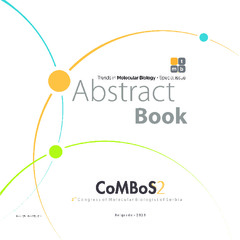Приказ основних података о документу
Activation of coagulation factors and prothrombic properties of endothelium in hematological malignancies
| dc.creator | Mitrović-Ajtić, Olivera | |
| dc.creator | Đikić, Dragoslava | |
| dc.creator | Dragojević, Teodora | |
| dc.creator | Otašević, Vladimir | |
| dc.creator | Živković, Emilija | |
| dc.creator | Vuković, Vojin | |
| dc.creator | Vukotić, Milica | |
| dc.creator | Subotički, Tijana | |
| dc.creator | Diklić, Miloš | |
| dc.creator | Suvajdžić-Vuković, Nada | |
| dc.creator | Mitrović, Mirjana | |
| dc.creator | Mihaljević, Biljana | |
| dc.creator | Antić, Darko | |
| dc.creator | Čokić, Vladan | |
| dc.date.accessioned | 2024-01-27T19:48:51Z | |
| dc.date.available | 2024-01-27T19:48:51Z | |
| dc.date.issued | 2023 | |
| dc.identifier.isbn | 978-86-7078-173-3 | |
| dc.identifier.uri | http://rimi.imi.bg.ac.rs/handle/123456789/1420 | |
| dc.description.abstract | Introduction: Patients with hematological malignancies have an increased risk of thrombotic complications, ranging from 3-5% in patients with lymphoma and acute myeloid leukemia (AML). The presented study observed the onset of thrombus formation to predict risk factors for thrombosis in lymphoid and myeloid malignancies. Methods: Coagulation factors, inflammatory signaling pathways and adhesion molecules have been observed in patients with Hodgkin lymphoma (HL), diffuse large B-cell lymphoma (DLBCL), follicular lymphoma (FL) and AML. Their mononuclear cells (MNC) trans-endothelial migration through human microvascular endothelial cells (HMEC-1) monolayer is observed by Boyden chamber. Results: Thrombin was in positive correlation with tumor necrosis factor alpha (TNF-α) in HL, while with P-selectin (p<0.001), tumor growth factor-beta (TGF-β) and factor VIII (p<0.05) in DLBCL and AML. Transendothelial migration of MNC was increased by TNF-α (p<0.001) in DLBCL regardless of previous thrombosis. Regarding coagulation, factor VIII was increased in HL and AML (p<0.05), while tissue factor in non-Hodgkin lymphomas (DLBCL and FL, p<0.05). Tissue factor was in positive correlation with adhesion molecule P-selectin and factor VIII (p<0.05). P-selectin was increased in non-Hodgkin lymphomas (p<0.0001), while TGF-β only in FL (p<0.001). Fibrinolytic activity was decreased in plasma of patients with HL, DLBCL, and FL (p<0.05), but largely in AML (p<0.01) as measured by tissue-type plasminogen activator. Inflammatory NF-κB signaling has been activated in HL and DLBCL, while p38 signaling only in HL. Conclusion: Coagulation factors and inflammation are increased in hematological malignancies along with the interaction of the endothelium and circulating cells that predispose to thrombus formation | sr |
| dc.language.iso | en | sr |
| dc.publisher | Belgrade: Institute of Molecular Genetics and Genetic Engineering (IMGGE), University of Belgrade | sr |
| dc.relation | info:eu-repo/grantAgreement/ScienceFundRS/Ideje/7749695/RS// | sr |
| dc.rights | openAccess | sr |
| dc.source | CoMBoS2 – the Second Congress of Molecular Biologists of Serbia, Abstract Book – Trends in Molecular Biology, Special issue 06-08 October 2023, Belgrade, Serbia | sr |
| dc.subject | hematological malignancies | sr |
| dc.subject | thrombus | sr |
| dc.subject | coagulation factors | sr |
| dc.subject | adhesion molecules | sr |
| dc.title | Activation of coagulation factors and prothrombic properties of endothelium in hematological malignancies | sr |
| dc.type | conferenceObject | sr |
| dc.rights.license | ARR | sr |
| dc.rights.holder | Institute of Molecular Genetics and Genetic Engineering (IMGGE), University of Belgrade | sr |
| dc.citation.epage | 134 | |
| dc.citation.spage | 134 | |
| dc.identifier.fulltext | http://rimi.imi.bg.ac.rs/bitstream/id/3317/CoMBoS_Activation_of_Coagulation_factors_conf_2023.pdf | |
| dc.identifier.rcub | https://hdl.handle.net/21.15107/rcub_rimi_1420 | |
| dc.type.version | publishedVersion | sr |

